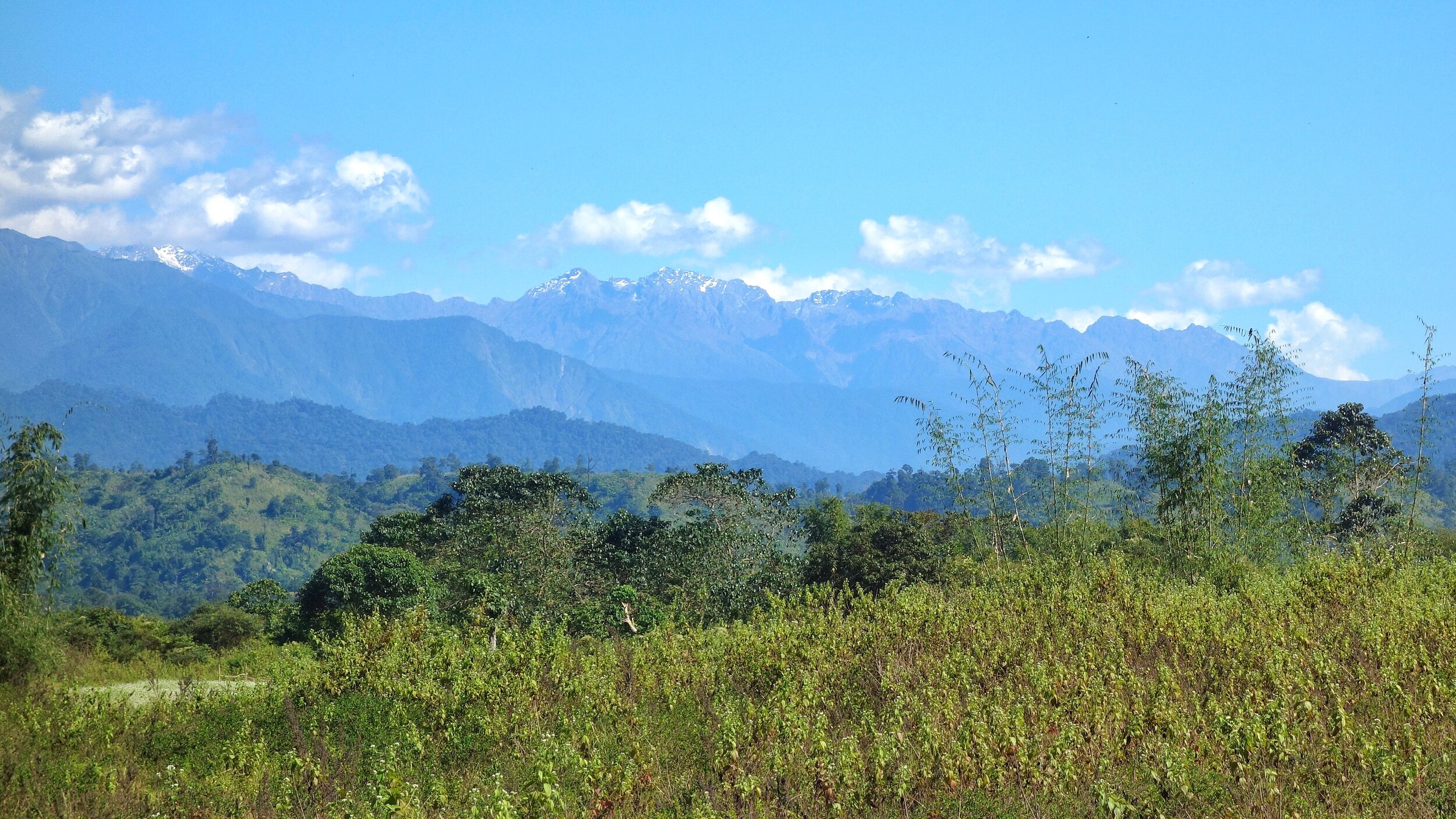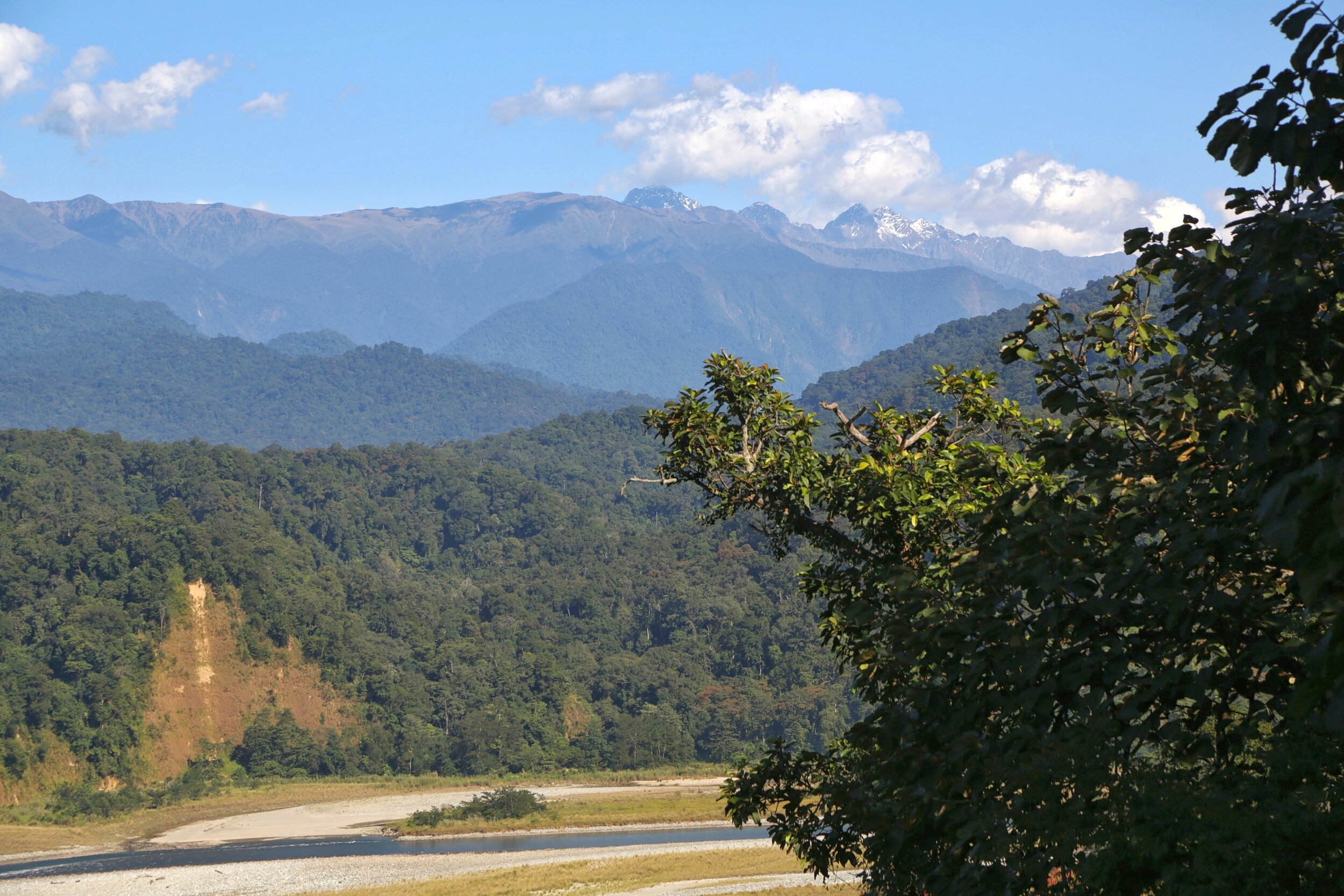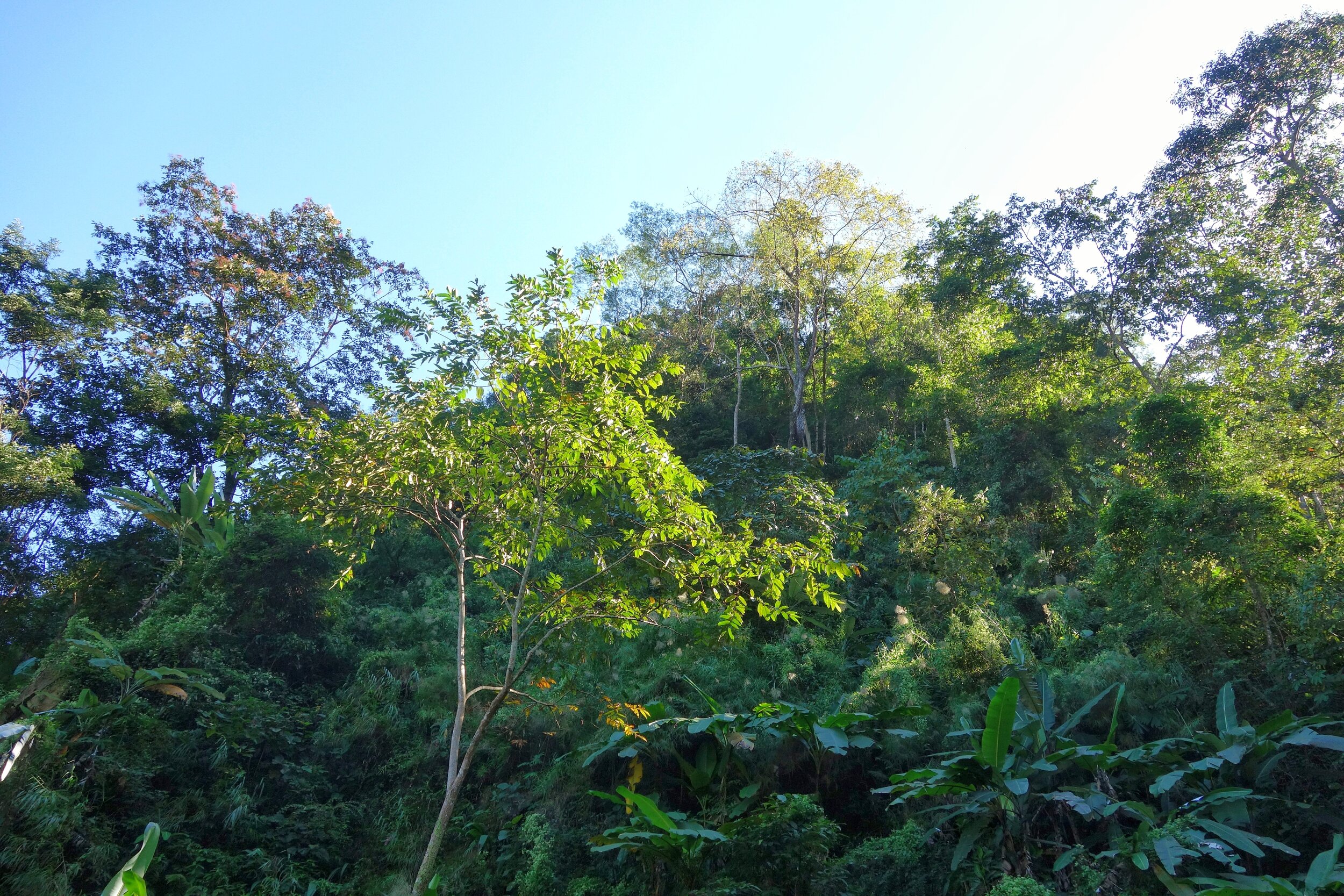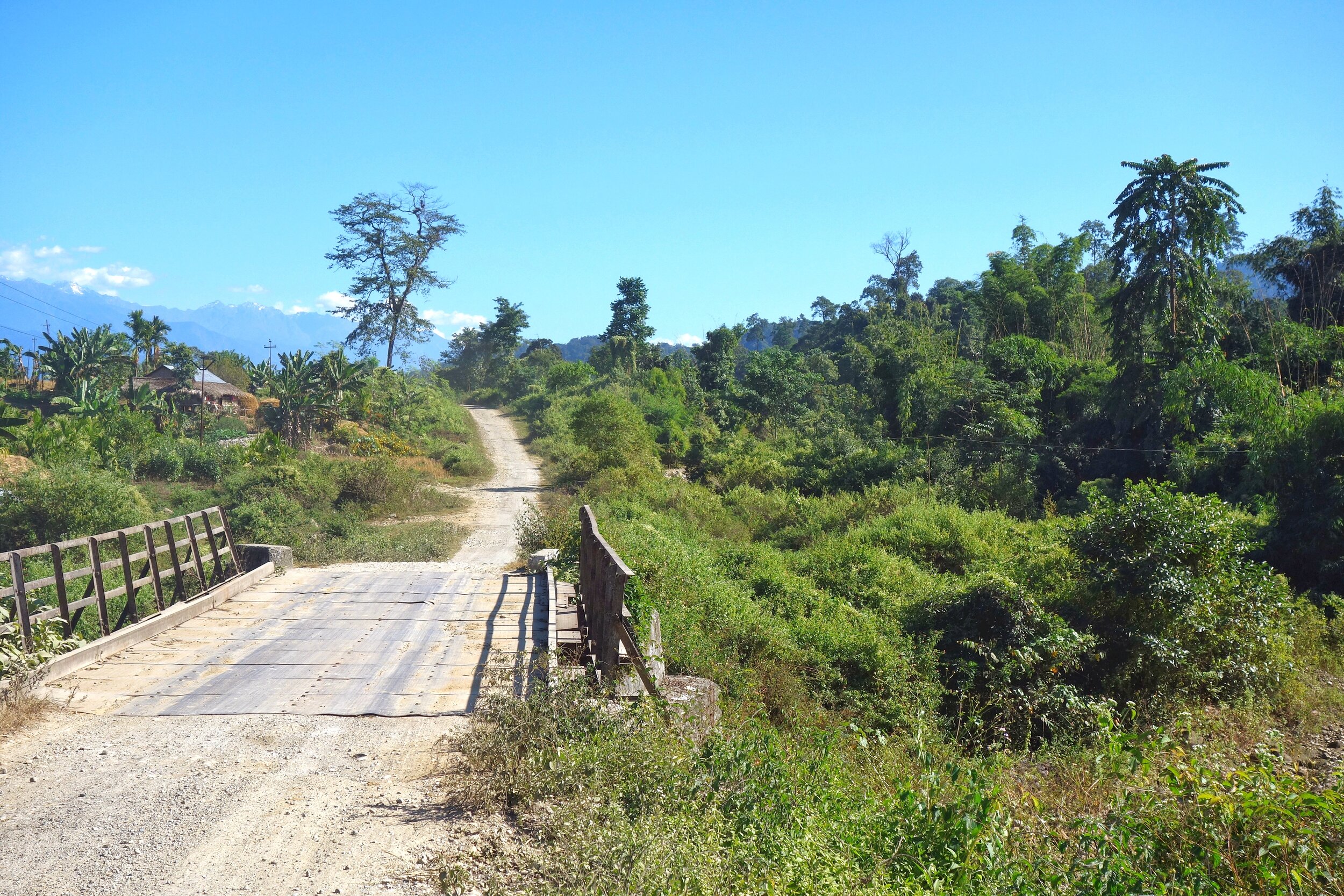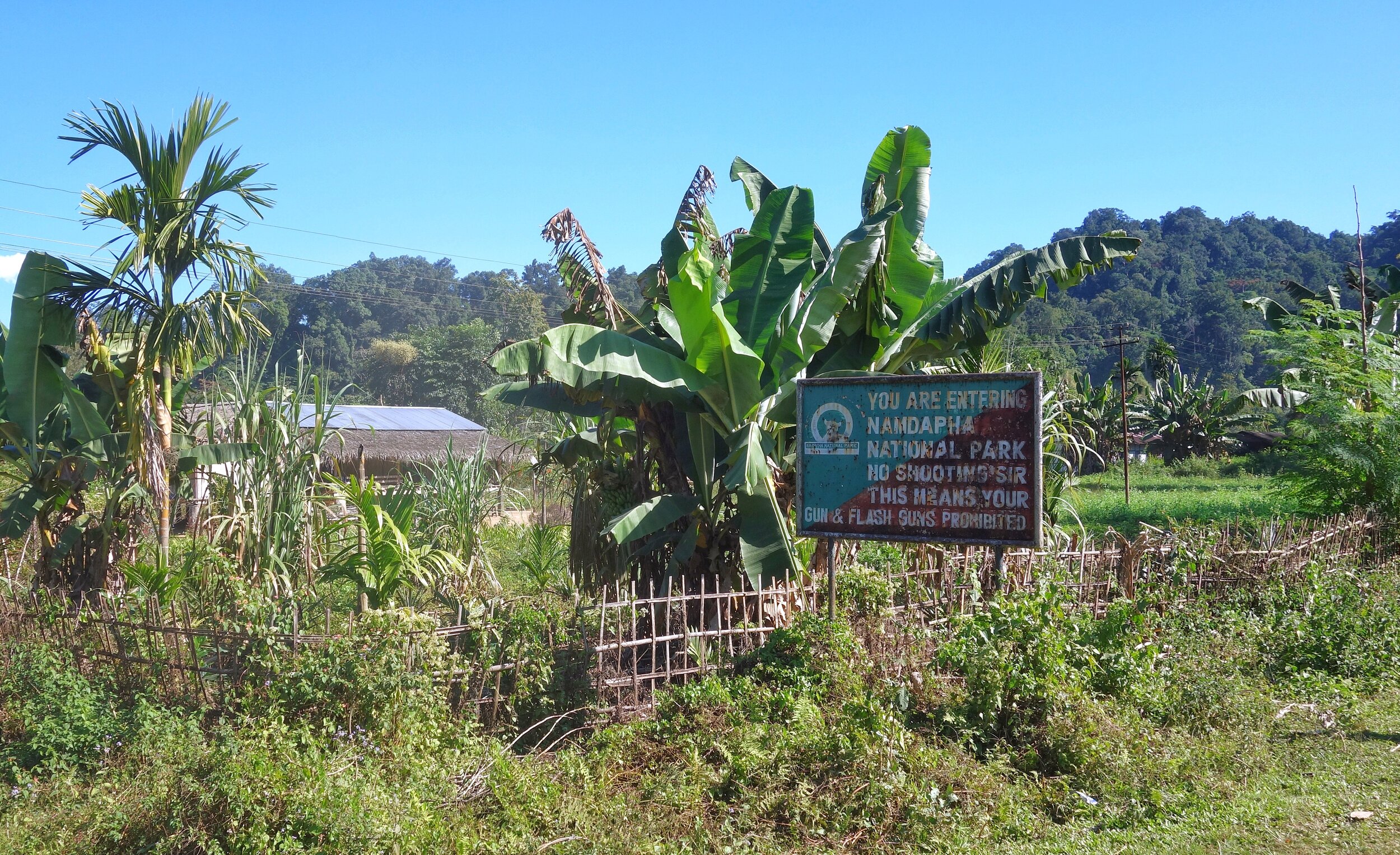Namdapha National Park
One of the most exotic Bio-Diversity Hotspots in the Eastern Himalayas the Namdapha National Park offers a wide Range of Habitats ranging from Tropical Rain Forests to Coniferous Forests to Alpine Grasslands to Snow Covered Peaks. It is the only National Park in the World which is home to 4 Species of Big Cats ie the Tiger, The Leopard, The Clouded Leopard and the elusive Snow Leopard. It is the home to the most Northerly Rain Forests on the Planet.
The Noa Dhing River with Rain Forested Hills in the background and the Dapha Bum Mountain in the distant background.
The Nampdapha National Park is on the UNESCO’s World Heritage Site watchlist and could one day be designated as one. The UNESCO describes the National Park as such :
“Namdapha National Park, Kamlang Wildlife Sanctuary and Jairampur Forest Division are located within India’s northeastern frontier state–Arunachal Pradesh. Among the last great remote wilderness areas of Asia, Namdapha and its adjoining areas, is flanked by the Patkai hills to the south and south-east and by the Himalaya in the north. The area lies close to the Indo-Myanmar-China trijunction. Forests are contiguous across the international boundary with Myanmar, with several adjoining protected areas, including the huge recently declared Hukawng Valley Tiger Reserve (Rabinowitz 2001, 2004).
The mixed Forest at Namdapha National Park
The entire area is mountainous and comprises the catchment of the Noa-Dihing River, a tributary of the great Brahmaputra river which flows westwards through the middle of Namdapha. Numerous streams drain into the Noa-Dihing and forest pools and natural salt licks are abundant in the area. The park spans a wide altitudinal range from 200 m to 4,571 m at Dapha Bum, the highest point in the park. The terrain is steep and inaccessible. Interior and higher areas have not been explored, except by hunters from local communities.
The wide Namdapha Valley which is the lowest point of the Park
It is bordered on the north by the Kamlang Wildlife Sanctuary (550m to 4200 m), Lohit district. To the east and south-east lie the Patkai hill ranges and the international border with Myanmar. To the south-east are unclassified state forest (USF) areas (c. 700 km²) of the Vijaynagar circle. To the west, are Reserved Forests and USF areas of the Jairampur Forest Division. Kamlang WLS is bounded on the north, it is bounded by the Lang river and later by the Lati, to the south lies the Changlang-Lohit district boundary and on its western side, the Tawai Brai up to its confluence with the Kamlang river. The area is mostly steep mountainous terrain, with few gentle slopes crisscrossed by numerous rivers (Lai, Lati, Lang and Kamlang), rivulets and perennial streams. “
The Noa Dhing River coming out of the thick Forested Hills
While at the Park I spoke to a local Ranger about the big cats present in the Park. He told me the most common one (though very difficult to sight) was the Common Leopard. And there were Tigers in the interiors of the Park and the Park itself comes under the Project Tiger. As for Clouded Leopards he said one was sighted many years ago in the dense Forests as Clouded Leopards are again very elusive. As for the Snow Leopard, the Ranger said that more than two decades while on an Expedition to the Dapha Bum Mountain with an Army team they had seen scat of a Snow Leopard on the higher reaches.
The Deban Forest Rest House inside the Park which overlooks the Valley
Few researchers have actually done studies in the Park. A Research team in 2012 had set up Camera Traps inside the Park. They managed to click a large Tiger on one of the Camera Traps. However further research was hampered when the Team was fired upon by Poachers and the Camera Traps were stolen. This is really like the last frontier territory. And its spread over almost 2000 sq kms.
Mixed Forests at Namdapha National Park
The beautiful forests possess great biodiversity of Flora and Fauna. A details study of its species and genetic variation has not yet been thoroughly done. Namdapha is Botanist’s dream and it may take as long as 50 years to complete a comprehensive survey of its botanical resources. There are more than 150 timber species. The Pinus merkusi and Abies delavavi are not found elsewhere in India. One of the rarest and endangered orchids, the Blue Vanda found here. The most famous local medicinal plant Mishimi Teeta (Copti teeta), which is used by the local tribal for all kinds of diseases is available here but its export has been banned.
Mixed Forests at Namdapha National Park
The diverse vegetation and habitats of Namdapha grooms diverse species of animals and birds. It is only park in the World to have the four Feline species of big cat namely the Tiger (Panthera Tigris), Leopard (Panthera Pardus), Snow Leopard (Panthera Uncia) and Clouded Leopard (Neofelis Nebulosa) and numbers of Lesser cats. A number of primate species are seen in the park, such as Assamese macaque, pig-tailed macaque, stump-tailed macaque and number of the distinctive Hoolock Gibbons (Hylobates Hoolock), highly endangered and only ‘ape’ species found in India dwells in this impenetrable virgin forest. Of the many other important animals are the elephants, black bear, Indian Bison, several species of deers, reptiles and a variety of arboreal animals.
The Noa Dhing River
Among the bird species, most notable are the White winged Wood Ducks, a rare and endangered species, the great Indian hornbills, jungle fowls and pheasants flop their noisy way through the jungle, and which harbours other colourful bird and animal species. The inaccessibility of greater part of the park has helped to keep the forests in their pristine and virgin state in its natural form. Moreover, the park possesses great bio diversity of flora and fauna. The lush green under growths are thick and intertwined like cobwebs of canes, bamboos, wild bananas and variety of vegetation The grandeur of the wet tropical rain forest is breeding ground for varieties of animals and birds which is remarkable and worth seeing.
The Road into the Park with Chakma Tribal dwellings inside the Namdapha National Park.
Among the bird species, most notable are the White winged Wood Ducks, a rare and endangered species, the great Indian hornbills, jungle fowls and pheasants flop their noisy way through the jungle, and which harbours other colourful bird and animal species. The inaccessibility of greater part of the park has helped to keep the forests in their pristine and virgin state in its natural form. Moreover, the park possesses great bio diversity of flora and fauna. The lush green under growths are thick and intertwined like cobwebs of canes, bamboos, wild bananas and variety of vegetation The grandeur of the wet tropical rain forest is breeding ground for varieties of animals and birds which is remarkable and worth seeing.
Warning board before entering the Namdapha National Park
In 1947, Mr. W. Maiklinjalm, Forest Advisor to the Governor of Assam put forth a proposal to protect this wilderness and declare it a national park. But this was ignored and during the Indo-China war, files that advised protection mysteriously disappeared. In 1969, some of these papers were recovered. Namdapha was established as a wildlife sanctuary in 1972. It was declared a tiger reserve and national park in 1983. Total area of the park is about 1807.82 Km2 Namdapha first came to international prominence during the Second World War. After the Japanese invasion of China’s Pacific coast and Burma, allied planes regularly flew supply missions from Chabua in Assam to Kunming to support Generalissimo Chian Kai Shek’s Kuo Min Tang army.
A Chakma Buddhist Temple on the outskirts of the Namdapha National Park
Namdapha shot into prominence during the Second World War. It lay on the famous ‘hump’ air-route from Assam to China used by the Allies to support Chian Kai Shek’s Kuo Min Tang army. The reserve area of Namdapha first came into existence and notice to the international importance during the Second World War due to its rich biodiversity. The latter half of the war was witnessed here with several pilots being crushing at this site as a result of multiple air turbulence over the area. The area of Namdapha also proved to be the refugee camps for many immigrants and till today. The Chakma, refugees from Bangladesh, are the recent immigrants to the area, being settled by the Indian government in the 1960s in the areas between the town of Miao and the western edge of Namdapha.
EXCLUSIVE VIDEOS FROM THE PARK
Hoolock Gibbon in the Namdapha National Park
Glimpses of the Namdapha National Park
Driving Through the Namdapha National Park
References :
https://changlang.nic.in/namdapha-national-park/
http://natureconservation.in/namdapha-national-park-complete-detail-updated/
https://news.mongabay.com/2014/08/where-have-all-the-big-animals-gone-indian-park-devoid-of-many-species-further-threatened-by-forest-loss/

